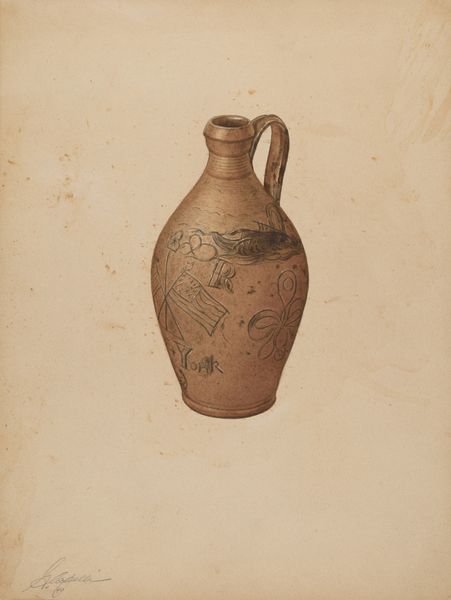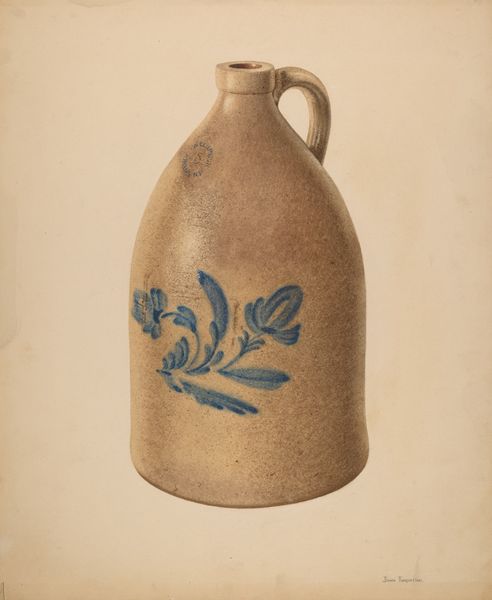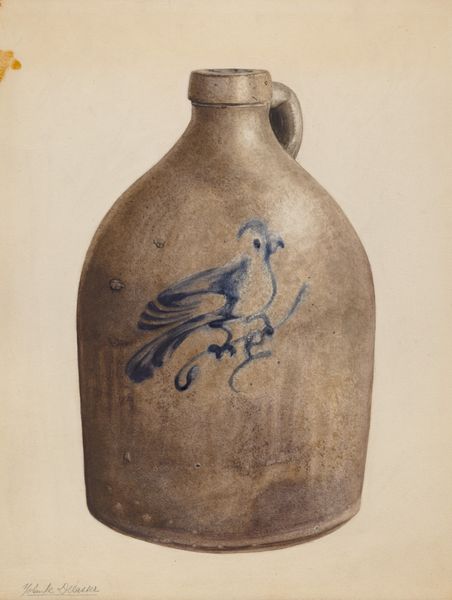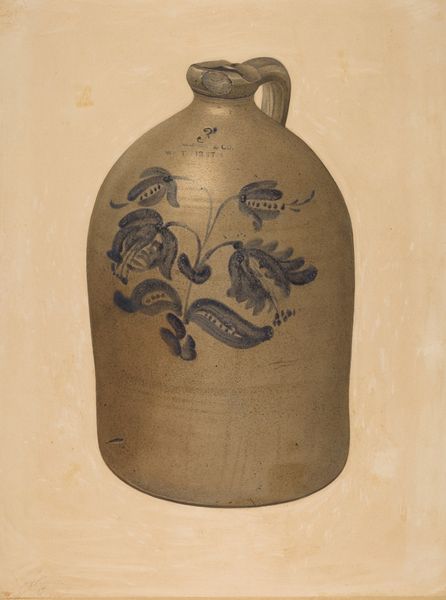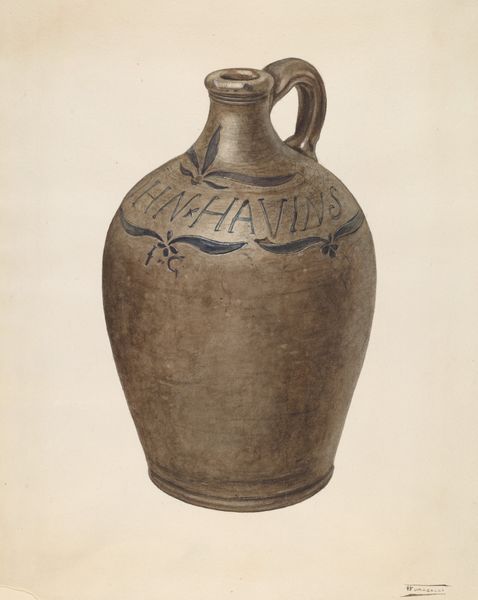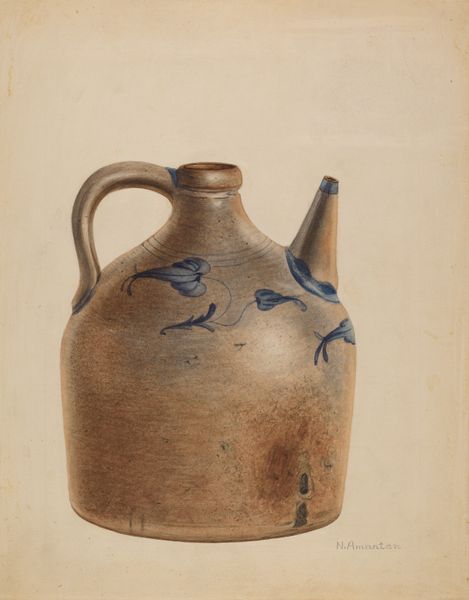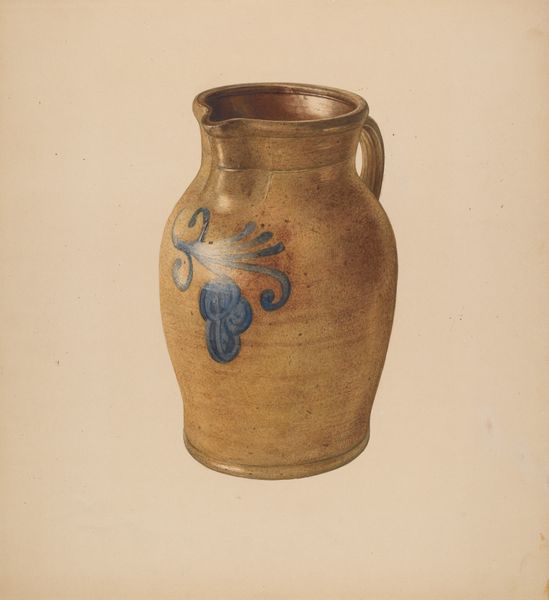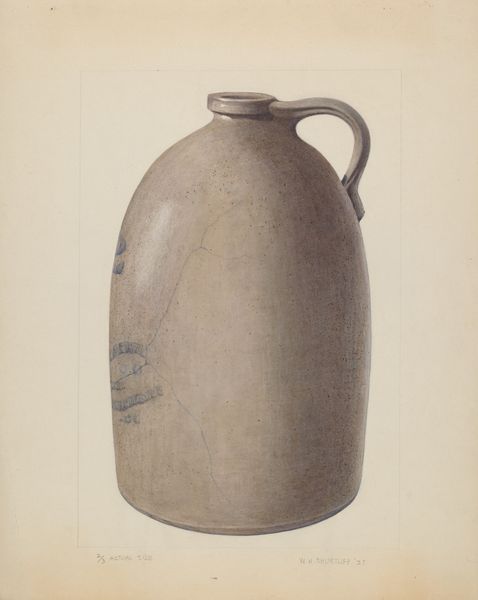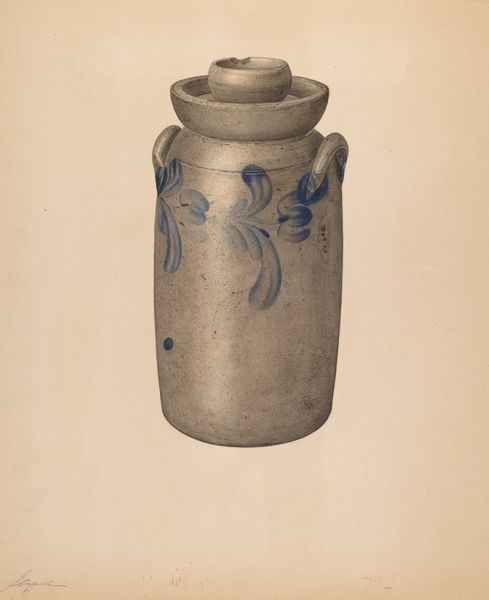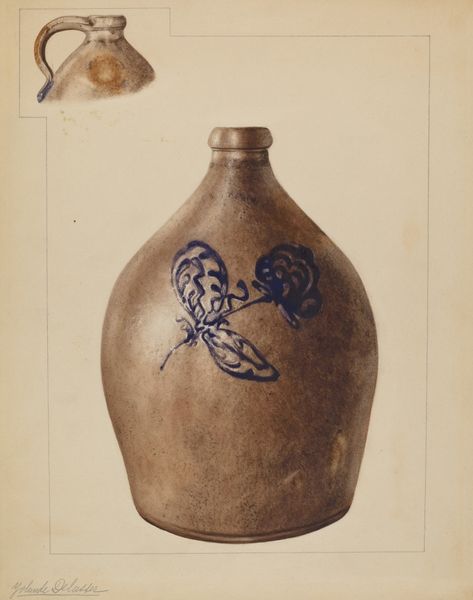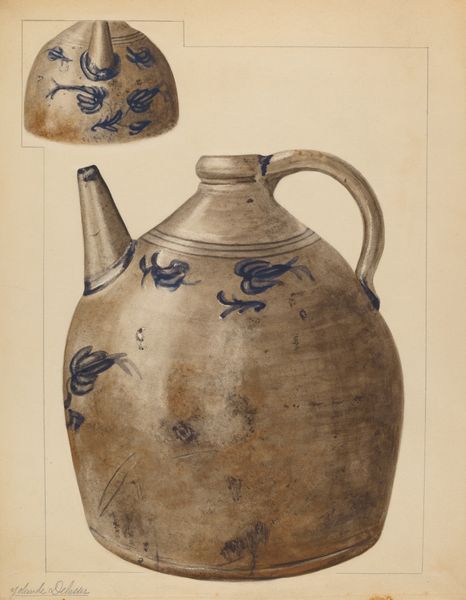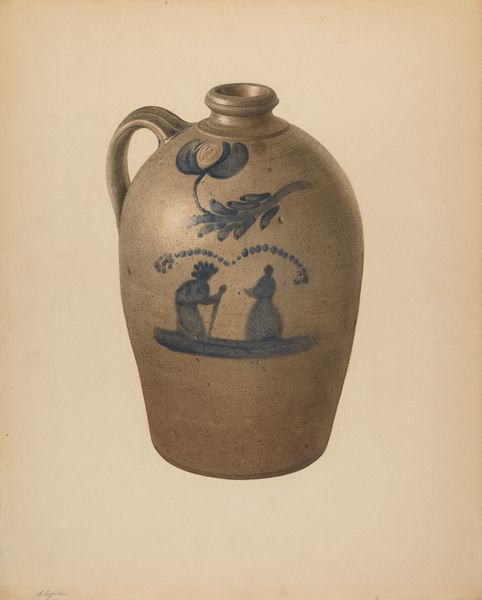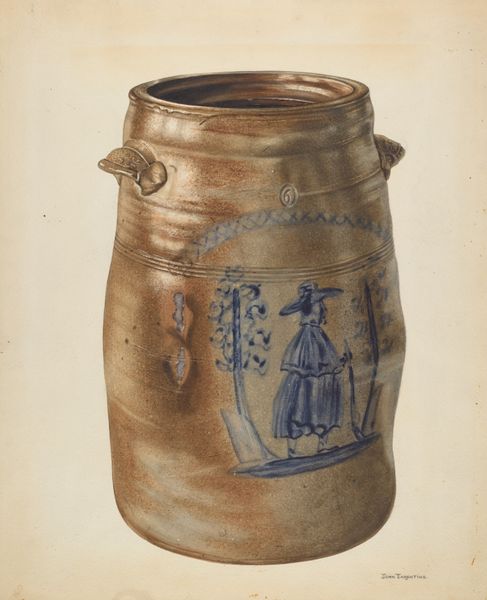
drawing, ceramic, pencil
#
drawing
#
ceramic
#
charcoal drawing
#
pencil drawing
#
folk-art
#
pencil
#
watercolor
Dimensions: overall: 45.7 x 37.8 cm (18 x 14 7/8 in.)
Copyright: National Gallery of Art: CC0 1.0
Editor: We’re looking at “Molasses Jug,” a drawing made around 1940 by Giacinto Capelli, using pencil and watercolor. The jug fills the frame, a sort of bulbous form rendered in muted earth tones with a faded blue illustration. It almost feels like a relic. What elements strike you? Curator: Initially, the pronounced linearity defining the jug’s form commands attention. Notice how Capelli employs varied line weights, subtly suggesting volume and surface texture. The monochromatic palette, punctuated by the cool blue of the design, creates a harmonious visual rhythm. Consider the deliberate placement of the jug within the picture plane. Do you perceive a conscious effort to create a sense of depth or spatial ambiguity? Editor: I see what you mean about the subtle depth, though it still feels somewhat flattened. What about the composition itself, focusing on how the jug's shape interacts with that flatness? Curator: The artist has positioned a basically symmetrical vessel slightly off center within the picture. By not quite centering the jug, Capelli prevents the composition from becoming static. The slight asymmetry introduces a dynamic tension, enhanced by the diagonal thrust of the painted design. Consider the role of the white background. How does the negative space contribute to your interpretation? Editor: That's interesting; the negative space allows the jug to project and defines its simple form. Considering this visual approach, would you consider the title of this work as equally important to how the object looks and feels? Curator: Absolutely. “Molasses Jug” provides a clear, if somewhat understated, anchor for interpreting the work, but does not entirely constrain it. What resonates with me is how the piece presents and arranges forms through carefully chosen linear and chromatic relations. I would go further, even to say the title provides semiotic closure by creating stability. Editor: So interesting how the visual presentation emphasizes structure! I appreciate this formal breakdown, particularly highlighting the asymmetry. Thanks! Curator: My pleasure. This exercise in analyzing the artwork based solely on the visual experience reveals previously unnoticed artistic approaches.
Comments
No comments
Be the first to comment and join the conversation on the ultimate creative platform.
